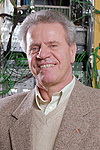Giorgio Bellettini returns as CDF co-spokesperson
 |
|
Giorgio Bellettini
|
Scientist Giorgio Bellettini has worked on the CDF experiment for more than 35 years — since before Fermilab broke ground on the detector building.
Now he will co-lead the CDF experiment as the collaboration closes out
more than three decades of taking and analyzing data. On June 1, Bellettini will begin his two-year term as CDF co-spokesperson, joining Texas A&M University Professor David Toback. He replaces Costas Vellidis, to whom Bellettini tips his hat.
"Costas worked superbly on the data analysis," he said. "He did a great job — so great that I cannot repeat it."
Bellettini is, however, repeating his successful CDF leadership role: He was co-spokesperson in 1995 when CDF scientists discovered the top quark together with DZero.
A scientist at the Italian National Institute of Nuclear Physics and the University of Pisa, Bellettini is well-known for helping create a strong community of Italian scientists at Fermilab. In 1979, when the CDF detector was still in its conceptual design phase, Bellettini agreed with scientists Bob Diebold and Alvin Tollestrup to recruit scientists from Italy to join the newly formed Italy-U.S.-Japan collaboration to design and build the experiment. Building on that effort, in 1984 he began a program for Italian students to participate in various projects at Fermilab.
Now that he is back steering the CDF ship, Bellettini will help ensure that the experiment's remaining scientific findings are published and will merge them with DZero papers to preserve the Tevatron's legacy. At the same time, he will continue to actively recruit Italian students and researchers to join the laboratory's muon and neutrino experiments and its accelerator and technical R&D programs.
"Dave's job and mine is to supervise the physics at CDF," Bellettini said. "I also plan to continue to be instrumental in expanding the Italian involvement in advancing experimental research at the laboratory — in all the new active areas."
His predecessor Costas Vellidis knows he's leaving the experiment in good hands.
"Giorgio is exactly the leader that CDF needs to finish the legacy effort. His deep knowledge of the experiment and huge experience as a leader and mentor are ideal to shape the end phase of the physics program and supervise its completion," Vellidis said. "His enthusiasm is essential to keep the collaboration on board in this final effort."
—Leah Hesla
|